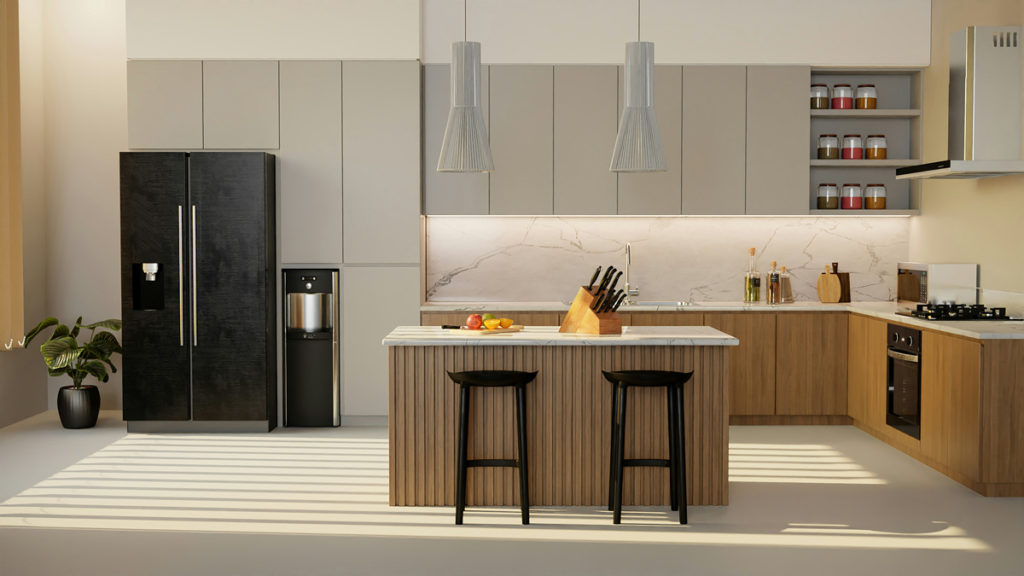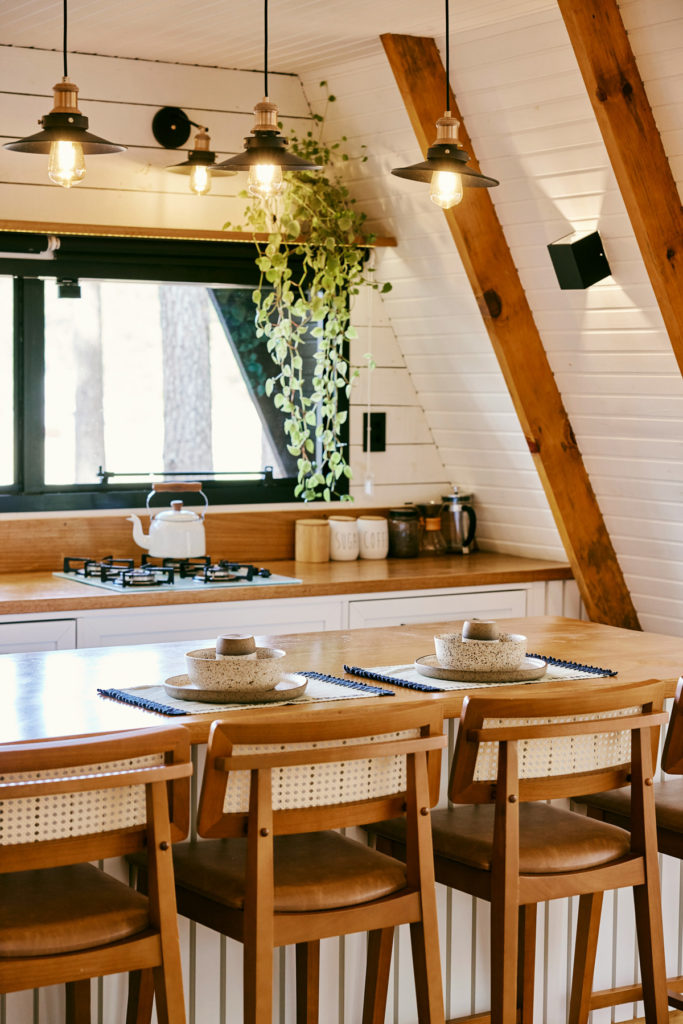
Wood cladding has become a popular choice for kitchen interiors, and it’s easy to see why. With a wide range of wood type and finish options, it’s a creative and clever way to open up a space and make it feel more welcoming.
In this post, we’ll explore the benefits of adding wood cladding to your kitchen, the types of wood you can use, design ideas, and some practical tips for maintaining wood in a kitchen environment, so let’s dive right in.
Benefits of Wood Cladding in the Kitchen
1. Warmth and Comfort:
The kitchen is often a communal place where families and friends gather. As such it’s important to have a kitchen that feels warm, cosy and inviting to the people in it. Wood cladding can add a more organic and natural feel to your kitchen, achieving this result.
2. Versatility:
It is important to consider the look and feel that you want your home to have. Light woods like pine or oak can create a Scandinavian-inspired space, conversely darker woods like walnut or mahogany can bring a sense of luxury and sophistication.
3. Texture and Depth:
By simply adding wood cladding to the walls or cabinetry in your kitchen, you can add depth and detail, making the space more inviting. The grains and natural patterns of wood are ideal for a more organic touch, contrasting beautifully with other materials such as marble or smooth tiles.
4. Eco-Friendly Option:
There are plenty of sustainable types of wood cladding so be sure to source responsibly and consider the types of wood that you want to use.

Types of Wood Cladding for Kitchens
When considering wood cladding for your kitchen, it’s important to choose a type of wood that fits your desired aesthetic, budget, and maintenance requirements. Here are some of the options available:
Pine:
Pine is a softwood that is a fantastic choice for those on a budget. More importantly it is easy to fit which is handy for those of us that are not so experianced with DIY.
It can be left natural or stained to a darker shade. Pine works well for a rustic or country-style kitchen.
Oak:
A hardwood known for its strength and durability. It has a more subdued grain than pine and can be stained or treated to achieve different looks. Oak cladding is a great option for you home if you are going for a timeless and elegant kitchen design.
Walnut:
Walnut is a luxurious hardwood with a rich, dark colour and a fine grain. It is often used in high-end kitchen designs. However, walnut can be more expensive than other options and requires regular maintenance to keep its lustre.
Cedar:
Cedar is known for its natural resistance to moisture, making it prfect for kitchens. It has a warm, reddish hue and a distinct aroma that adds to its appeal. Cedar can be left untreated to develop a natural patina over time, or it can be sealed to maintain its original colour.
Design Ideas for Adding Wood Cladding to Your Kitchen
Accent Walls:
One of the most popular ways to use wood cladding in the kitchen is by creating an accent wall highlighting a particular area of the kitchen. For those of you looking for warmth and contrast a wood accent is worth looking into.
Cabinet Fronts:
Anyone going for a natural look should think about wood-clad cabinet fronts. Giving your kitchen a cohesive and natural look and by using different types of wood for upper and lower cabinets will spice up your kitchen and add depth to the space.
Ceilings:
For larger kitchens with high ceilings, wood-clad ceilings can appear striking by giving the illusion of more height and a touch of warmth to the room. For a more rustic look, tongue-and-groove panels may be the best bet.
Kitchen Islands:
This is a popular approach to adding texture and cosiness to your kitchen. Especially when paired with a contrasting countertop material like marble.
Backsplashes:
For those who want a more subtle use of wood, it’s worth considering a wood-clad backsplash. This can add just the right amount of texture without overwhelming the space.
However, it’s important to remember to choose a finish that protects the wood from water and cooking splatters.
Practical Tips for Maintaining Wood Cladding in the Kitchen
Wood is a natural material that requires some care so be sure to do you research on the type of wood you choose and it’s specific requirements. This is especially important in a kitchen where it is exposed to moisture, heat, and grease.
Sealing:
Seal the wood. This protects it from moisture and stains. Use a high-quality sealant or oil finish designed for wood surfaces in kitchens.
Regular Cleaning:
Clean wood surfaces regularly with a soft cloth and a mild soap mixed with water. Don’t apply harsh chemicals or abrasive cleaners, as these harm the wood finish.
Ventilation:
Proper ventilation is crucial in a kitchen with wood cladding. Ensure your kitchen is well-ventilated to reduce humidity and prevent mould or mildew from developing on the wood.
Adding wood cladding to your kitchen interior is a fantastic way to enhance your kitchen with natural warmth and character. With a wide range of wood types, finishes, and design options available you can create a beautiful kitchen. Wood cladding offers endless possibilities to transform your kitchen into a welcoming and stylish space.










